rmaf
Administrateur

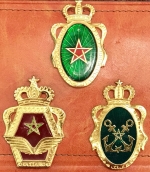
messages : 15604
Inscrit le : 18/03/2007
Nationalité : 
Médailles de mérite : 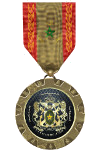
 |  Sujet: Exercice African Lion 1998 Sujet: Exercice African Lion 1998  Mar 3 Sep 2019 - 15:29 Mar 3 Sep 2019 - 15:29 | |
| - Citation :
- In 1998, Moroccan and American leaders joined forces to defeat a simulated enemy on a computerized battlefield. The sophisticated simulation equipment, known as the Joint Conflict and Tactical Simulation Systems, allowed military leaders to simulate a battle using terrain from any where in the world. A series of networked laptop computers at each station act as a company headquarters in the field.
Soldiers from the Vicenza, Italy-based US Army Southern European Task Force's (SETAF) 173rd Airborne Brigade (Separate) and 2nd Moroccan Parachute Infantry Brigade overcame language barriers and operational differences to battle enemy forces during Exercise African Lion '98, a computer assisted exercise held between 1 and 8 December 1998, in Ben Guerir, Morocco. Exercise African Lion was a 173rd Airborne Brigade-led exercise held every 2 years in Morocco.
As U.S. Army Europe's only conventional airborne force, the 173rd Airborne Brigade (Separate), SETAF's infantry brigade and also known as the Lion Brigade, was tasked with giving its expertise in planning a military operation to leaders of the Moroccan Parachute Brigade. This step-by-step procedure, known as the Military Decision Making Process (MDMP), helped the two countries understand each other's doctrine, operating methods, techniques and procedures. The MDMP is the procedure the staff and commander go through to develop an operational plan.
In the Lion Brigade's case, the plan called for a coalition force of SETAF and Moroccan paratroopers to recapture an oil refinery seized by enemy forces, defend it against any counterattacks and assist other allied units in defeating enemy forces. With the help of translators from the 415th Military Intelligence Battalion, an element of the Louisiana Army National Guard, leaders from the 2 units' staffs got down to business. The plan they developed took several days worth of briefings, face-to-face meetings and behind-the-scenes conversations.
The exercise culminated with a 3-hour-long computer-driven battle between the US-Moroccan coalition and enemy forces. Officers worked side-by-side to chart the battle. Enlisted radio transmission operators relayed information in English and French. The buzz of activity in the joint tactical operations center approached that of an actual battle. The scenario was played out on computers from SETAF's deployable Battlefield Simulation Center, which regulated everything from enemy attacks to weather and unit proficiency. They deployed 16 work stations which can simulate all aspects of the battle, from brigade down to the individual soldier. Using computers saves time, money and the number of soldiers needed to run an exercise. The staff's reports and procedures are also the same during a computer-run exercise as they are during an exercise with troops. 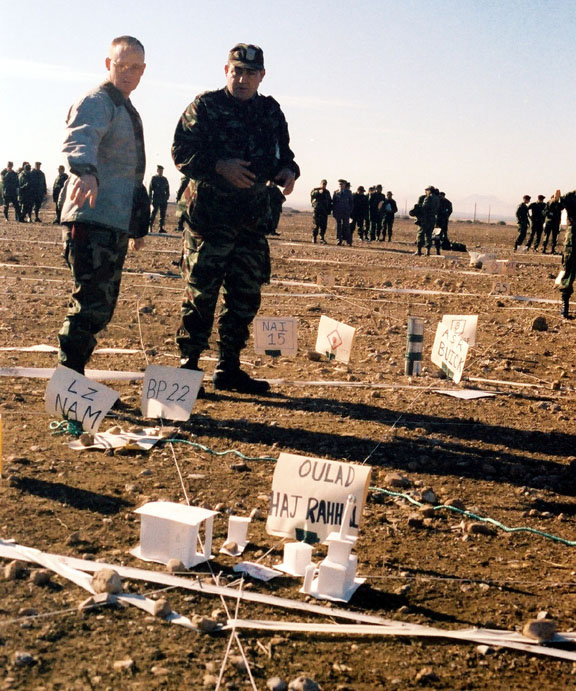 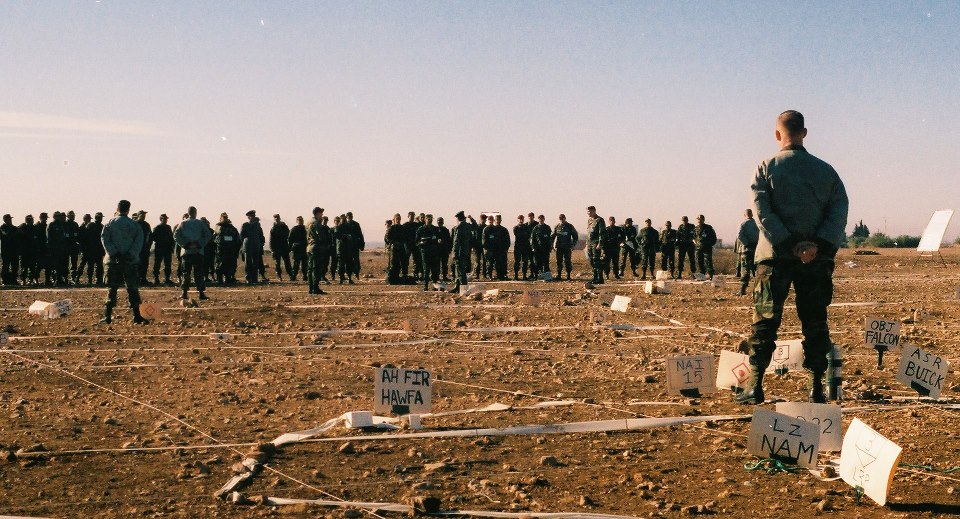  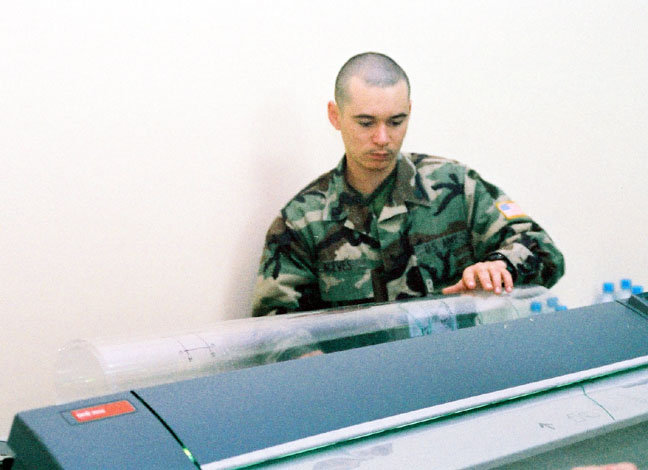  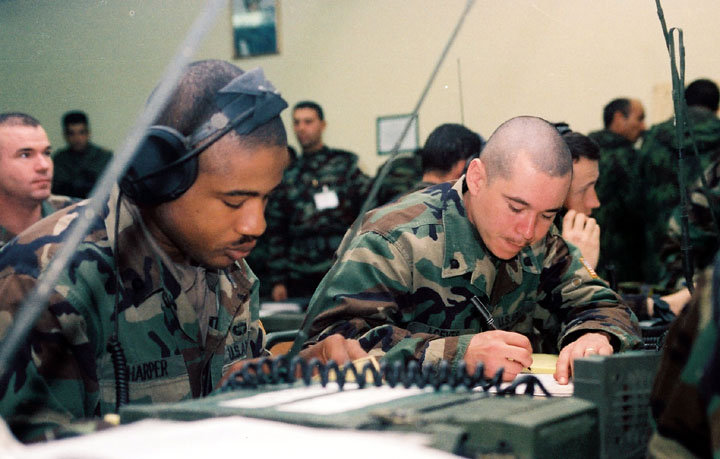  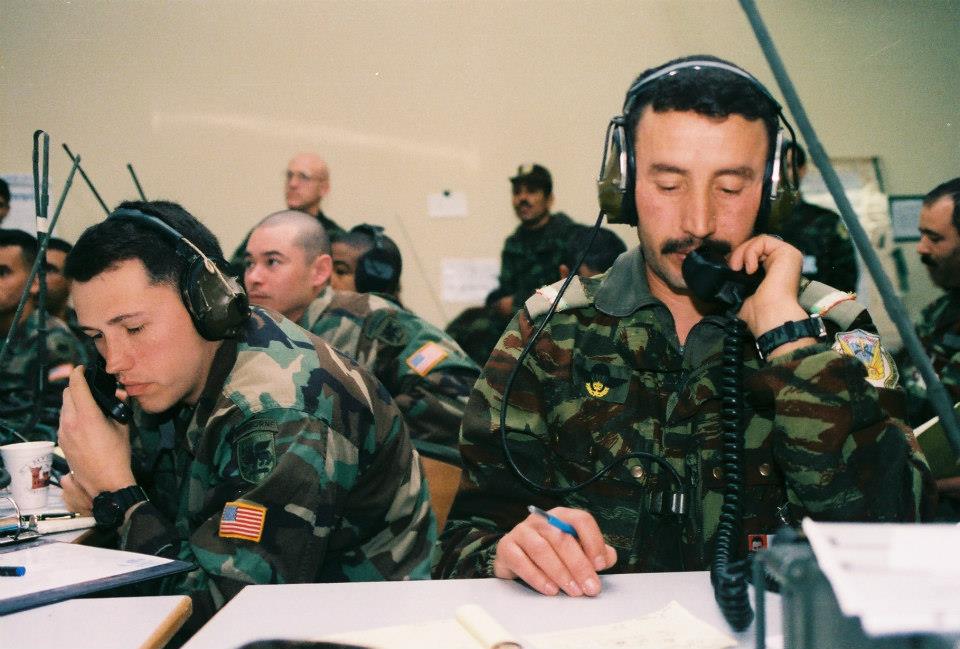  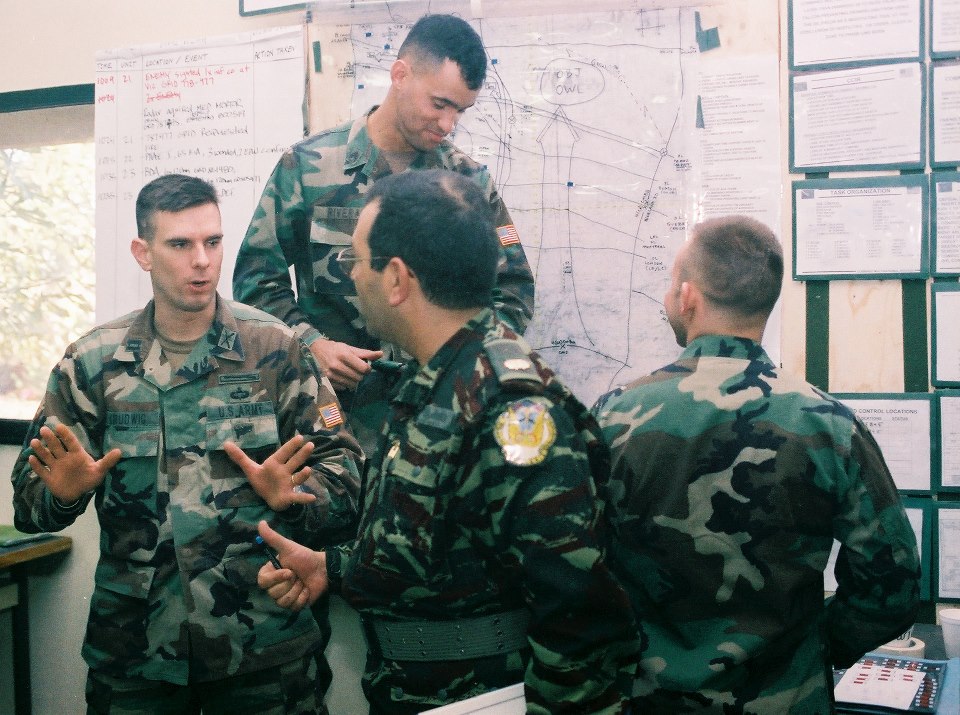 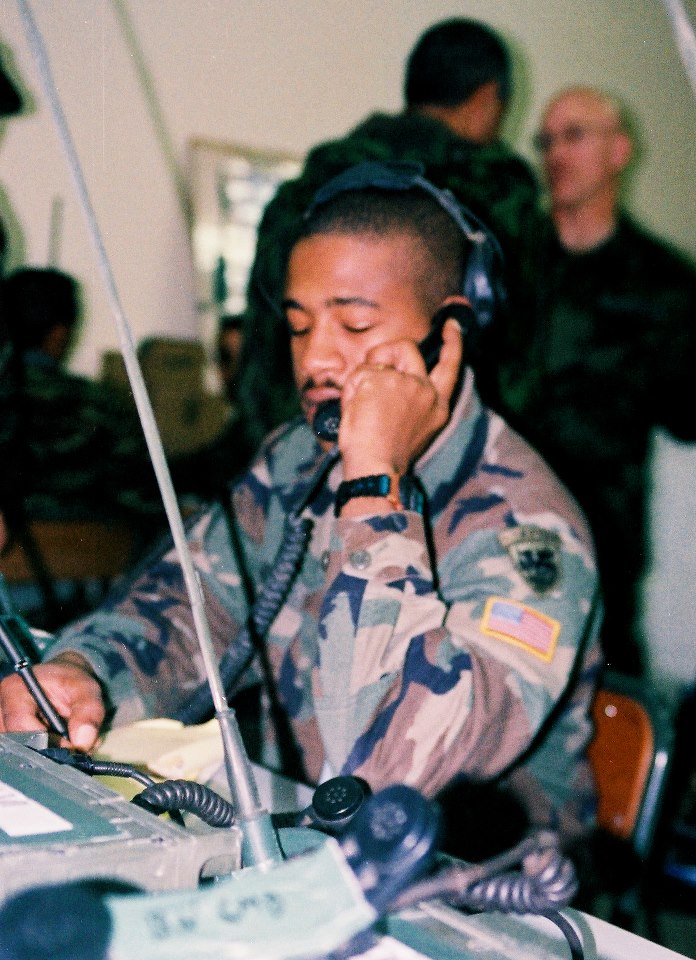   | |
|

